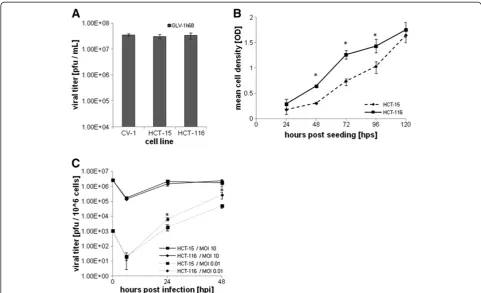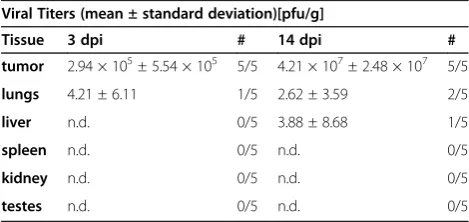Growth inhibition of different human colorectal cancer xenografts after a single intravenous injection of oncolytic vaccinia virus GLV 1h68
Full text
Figure




Related documents
This blinded randomized controlled trial where participants were recruited from among eligible women attending the general female outpatient clinic at Thika
Fig.3 shows the detailed system configuration of the novel series hybrid single-phase active power filter suitable for the voltage-source type harmonic source.. It is almost the
Our algorithm depends on data mining, it is Apriori based so it detects all plagiarized text inside the source text files in an reasonable and acceptable time.. DATA
APPLE, Atherosclerosis Prevention in Pediatric Lupus Erythematosus; CIMT, carotid intima-media thickness; CVD, cardiovascular disease; FMD, fl ow-mediated dilatation;
The goal of the rating function is to provide objective feedback on a delivered service without human intervention. We define in the following a feedback forecasting model
Regardless of whether structural change favours the good upon which the market distortion is imposed, the comparative-static welfare effects are reversed, from negative to
The Natural History Museum (NHM) in London houses the foraminiferal collections, letters and library of Fortescue William Millett (1833–1915), rescued on his death from his





